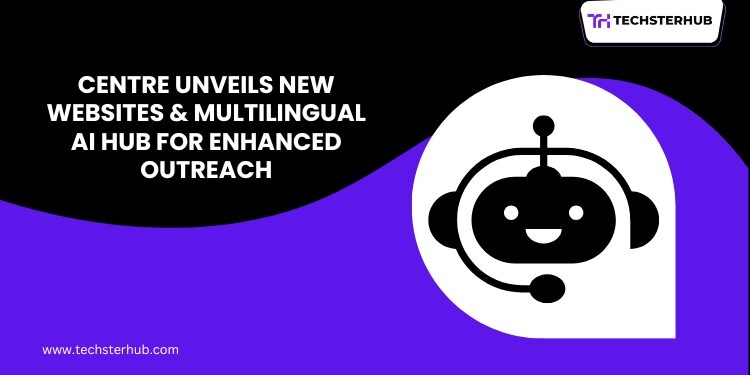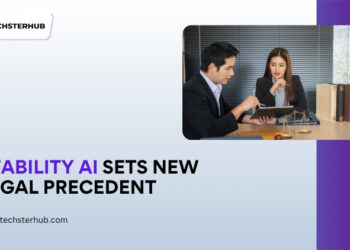The central government of India implemented substantial updates to its online platforms to enhance the accessibility of its government schemes and services. The updates involve both the redesign of multiple government websites and the establishment of a multilingual Artificial Intelligence (AI) hub. The objective is to improve access for all Indian citizens to government programs while eliminating language obstacles that prevent people from understanding their entitled benefits.
Revamping Government Websites for Better Accessibility
The government considers enhancing the digital accessibility of its schemes and services to be its top priority. The updates to government websites are meant to enable citizens to locate information quickly, submit benefit applications easily, and monitor their application statuses. The main enhancement includes website navigation simplification which allows users to access services more easily.
A clean layout and user-friendly design characterize the new websites to help users quickly locate important information. People who are unfamiliar with digital platforms or feel uncomfortable with technology will find these improvements vital. The government plans to improve search functionality and simplify website design so that all people can access government scheme information without technological barriers.
The redesigned websites now support mobile devices due to the increasing smartphone usage throughout the country. The necessity for government websites to implement mobile optimization becomes evident as millions of Indians use mobile devices as their primary means of internet access. People will be able to access services at any location including their homes and workplaces as well as rural regions.
Creating a Multilingual AI Hub for Wider Reach
The government has established a multilingual AI hub as another important measure. India hosts numerous languages which are spoken throughout its different regions. Although Hindi and English are common languages, regional languages remain prevalent among many people making it critical for them to receive government information in their native languages.
The AI hub tackles this issue by deploying Artificial Intelligence to provide translation services and multilingual support. The initiative facilitates access to government schemes for individuals in regions where neither Hindi nor English dominate by delivering content in their chosen language. The AI hub will offer translation services and voice assistance while providing chat support in multiple regional languages like Tamil, Telugu, Bengali, Kannada and several additional languages.
Advanced AI technology enables the hub to process natural language which allows users to interact with government websites and services through familiar and comfortable interfaces. The multilingual capability of the AI hub prevents citizens from being excluded because of language differences. The initiative represents a major advancement towards inclusive government programs which enable full participation from people of diverse linguistic backgrounds in national development.
The Benefits of the Multilingual AI Hub
Building the multilingual AI hub results in a range of meaningful advantages. The multilingual AI hub enables a broader group of people to access important information. Individuals who speak regional dialects or who do not speak Hindi or English fluently now have access to essential information in their native languages. Government schemes provide benefits to every citizen through services including financial assistance and healthcare along with educational programs and other support systems.
The AI hub delivers assistance to users immediately as it operates in real-time. The system enables citizens to receive immediate answers for their inquiries regarding form submissions, eligibility requirements and application progress tracking. By minimizing frustration and delays the process becomes more user-friendly. The AI hub delivers instructional support via voice and chat options to assist individuals who find reading or writing challenging.
Through its capabilities the AI hub could transform how government services engage with citizens. AI enables the government to gain a deeper understanding of citizen needs and concerns to deliver more personalized services. The implementation of these systems will improve how satisfied people feel about public services while optimizing how resources are distributed.
Enhancing the Outreach of Government Schemes
A primary obstacle the government encounters involves making citizens understand the different schemes available to them. Many citizens remain unaware of their entitled benefits due to insufficient information or the presence of complex information structures. The government implements revamped websites and a multilingual AI hub to both expand the reach of its schemes and make sure they target the neediest populations.
The improved design and enhanced accessibility of government websites will enable citizens to more easily find schemes they qualify for. The multilingual AI hub will expand outreach by providing information in several languages. Government programs will now reach a broader audience as rural residents and speakers of regional languages gain access to information about available opportunities.
The AI chatbots and voice assistants available on these websites guide users through scheme applications while answering their questions and delivering step-by-step instructions. Personalized assistance streamlines the application process by minimizing errors and preventing delays.
Promoting Digital Literacy Among Citizens
The government is actively working to promote digital literacy among residents as part of these changes. Government officials are implementing training programs and support measures to help citizens navigate digital platforms as they work to increase access to public services. The government’s digital training initiatives need to focus particularly on older adults and rural residents who generally lack internet usage experience.
The government provides digital literacy programs to enable people to fully utilize new websites and the AI hub. This initiative will enable people from all technological backgrounds to access online government services by bridging the digital gap.
Conclusion
Through website revamp initiatives and the launch of a multilingual AI hub the government moves forward to enhance the accessibility and reach of its programs. These adjustments enable the government to provide inclusive access to its services so that no citizen faces exclusion because of language barriers or technological proficiency. Citizens will benefit from government programs because the new platforms deliver easier information access alongside real-time assistance and native language support.
Digital services are increasingly important in daily life and these actions will ensure everyone has the chance to engage with the nation’s progress and development. By adopting an inclusive and user-friendly approach to government services India advances toward building an equitable and accessible society for all citizens.











